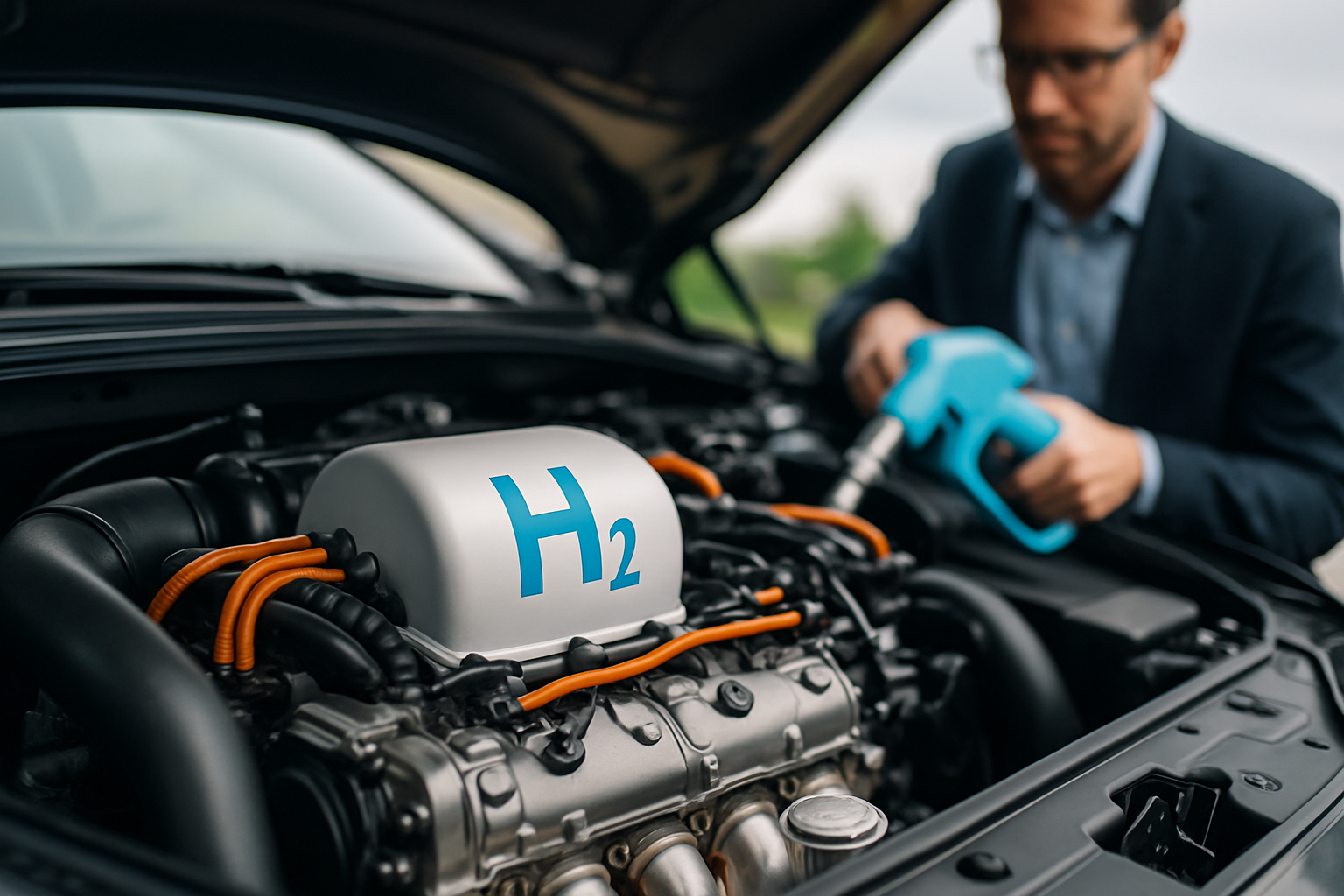Hydrogen-Powered Internal Combustion Engines: The Next Frontier in Clean Mobility
Imagine cruising down the highway in a sleek sports car, the familiar rumble of an internal combustion engine beneath the hood. But there's a twist – this engine isn't burning gasoline. Instead, it's powered by hydrogen, emitting nothing but water vapor. This isn't science fiction; it's the potential future of automotive technology that's gaining traction among manufacturers and researchers alike.

The Genesis of Hydrogen Combustion
Hydrogen as a fuel source for internal combustion engines isn’t a new concept. In fact, it dates back to the early 19th century when French inventor François Isaac de Rivaz created the first known hydrogen-powered engine. However, it wasn’t until the late 20th century that serious research into hydrogen combustion for automotive applications began to gain momentum.
The oil crises of the 1970s sparked renewed interest in alternative fuel sources, with hydrogen emerging as a promising candidate due to its abundance and clean-burning properties. Early experiments faced numerous challenges, including storage difficulties and low power output, but these setbacks only fueled further innovation.
How Hydrogen Combustion Works
At its core, a hydrogen-powered internal combustion engine operates on the same principles as a gasoline engine. The key difference lies in the fuel. Hydrogen is injected into the combustion chamber, where it mixes with air and is ignited by spark plugs. The resulting explosion drives the pistons, creating mechanical energy to power the vehicle.
The beauty of this system is its similarity to conventional engines, allowing for easier adaptation of existing manufacturing processes and infrastructure. Unlike fuel cells, which convert hydrogen to electricity, hydrogen combustion engines maintain the visceral experience of traditional driving – complete with engine noise and vibration – while dramatically reducing emissions.
Environmental Benefits and Challenges
The primary advantage of hydrogen combustion is its clean exhaust. When hydrogen burns, it produces only water vapor and trace amounts of nitrogen oxides, making it significantly cleaner than fossil fuels. This could play a crucial role in meeting increasingly stringent emissions regulations worldwide.
However, the environmental impact of hydrogen production remains a concern. Currently, most hydrogen is produced through steam reforming of natural gas, a process that emits carbon dioxide. For hydrogen combustion to truly be a zero-emission solution, it must be produced through clean methods such as electrolysis powered by renewable energy sources.
Overcoming Technical Hurdles
While promising, hydrogen combustion engines face several technical challenges. One major hurdle is the risk of pre-ignition and knocking due to hydrogen’s low ignition energy and high flame speed. Engineers are tackling this through advanced injection systems and combustion chamber designs.
Another significant challenge is onboard hydrogen storage. Hydrogen’s low energy density by volume means that large, high-pressure tanks are required to achieve a practical driving range. Researchers are exploring advanced storage materials and cryogenic systems to increase storage efficiency and safety.
The Road Ahead: Industry Adoption and Infrastructure
Several major automakers, including Toyota and BMW, have been actively developing hydrogen combustion technology. These companies see potential in combining the familiarity of internal combustion with the environmental benefits of hydrogen, particularly for larger vehicles and in markets where electric charging infrastructure is limited.
However, widespread adoption of hydrogen combustion engines will require significant investment in hydrogen production and distribution infrastructure. This chicken-and-egg problem – where infrastructure development is needed to drive vehicle adoption, but vehicle demand is necessary to justify infrastructure investment – remains a significant hurdle.
Hydrogen Combustion vs. Fuel Cells: Complementary Technologies
While hydrogen fuel cells have garnered more attention in recent years, hydrogen combustion engines offer unique advantages. They can be more cost-effective to produce, as they require less precious metals than fuel cells. Additionally, their similarity to conventional engines makes them more appealing to traditional automotive enthusiasts.
Rather than competing technologies, hydrogen combustion and fuel cells could serve complementary roles in the future automotive landscape. Combustion engines might be preferred for performance vehicles and heavy-duty applications, while fuel cells could dominate in passenger cars and light-duty vehicles.
As the automotive industry continues its march towards a cleaner, more sustainable future, hydrogen-powered internal combustion engines represent an intriguing middle ground between tradition and innovation. By combining the familiar driving experience of conventional engines with the environmental benefits of hydrogen fuel, this technology could play a crucial role in easing the transition to zero-emission vehicles.
While challenges remain, the potential of hydrogen combustion is too significant to ignore. As research progresses and infrastructure develops, we may soon see a new generation of vehicles that offer the best of both worlds – the exhilaration of internal combustion with the conscience-clear benefits of clean energy. The road ahead for hydrogen combustion engines is long, but the destination promises to be worth the journey.





